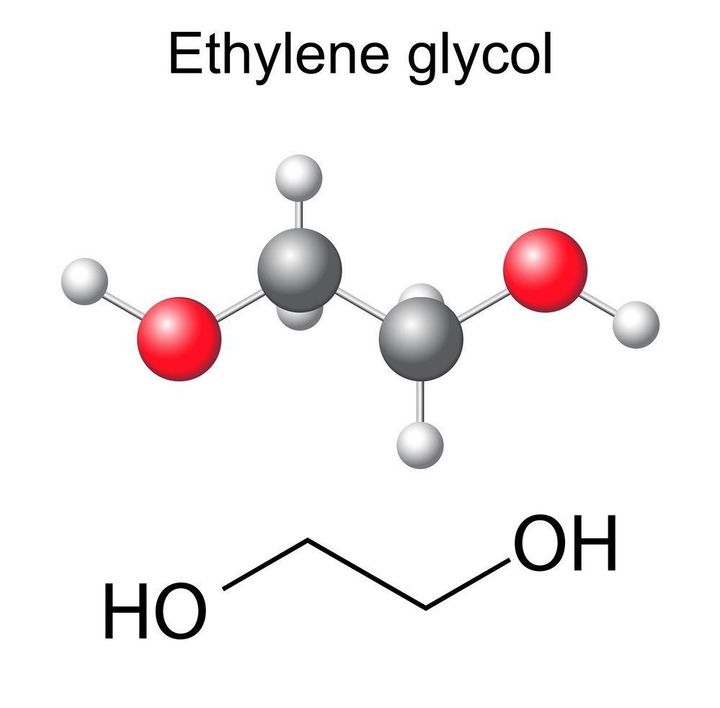


Ethylene glycol, a colorless, odorless liquid with a deceptively sweet taste, is a versatile industrial compound that plays a crucial role in various applications. However, its toxic nature demands careful handling and adherence to strict safety protocols. This article explores the properties, production processes, and safety considerations surrounding this remarkable yet hazardous chemical.

Ethylene glycol, also known as 1,2-ethanediol or ethane-1,2-diol, is an organic compound with the chemical formula (CH2OH)2. Its unique structure contributes to its distinctive properties, including a high boiling point of 198°C (388.4°F) and excellent solubility in water and organic solvents. These characteristics make ethylene glycol an indispensable component in numerous industries, from automotive to textile manufacturing.
| Production Process | Applications |
|---|---|
| Hydration of ethylene oxide derived from ethylene (ethene) | Automotive antifreeze and coolant systems |
| Polyester fibers and resins manufacturing | |
| Hydraulic brake fluids | |
| Inks and printing materials | |
| Deicing fluids for aircraft | |
| Certain types of explosives |
Ethylene glycol's versatility stems from its ability to lower the freezing point and raise the boiling point of solutions, making it an ideal coolant. Additionally, it serves as a crucial raw material in the production of polyester fibers and resins, widely used in the textile industry and for manufacturing plastic bottles and containers.
Despite its industrial importance, ethylene glycol poses significant health risks due to its toxicity. When ingested, it is metabolized in the body, producing toxic metabolites that can lead to metabolic acidosis and kidney damage. The lethal oral dose for an average adult is approximately 100 mL, and its sweet taste increases the risk of accidental poisoning, particularly among children and animals.
| Toxicity Mechanisms | Symptoms of Poisoning |
|---|---|
| Metabolic acidosis | Nausea |
| Kidney damage | Vomiting |
| Drowsiness | |
| Seizures |
Prompt medical attention and administration of specific antidotes, such as fomepizole, are crucial in cases of ethylene glycol poisoning to inhibit the metabolism of the compound and mitigate adverse effects.
To minimize exposure risks, it is essential to take appropriate precautions when handling ethylene glycol:
Avoid ingestion, skin contact, and inhalation of vapors
Use personal protective equipment (PPE) such as chemical-resistant gloves, safety goggles, protective clothing, and respiratory protection
Store in airtight containers, away from moisture, heat, and incompatible materials
Dispose of waste properly according to regulations
Proper labeling, storage, and handling practices are crucial to prevent accidental exposure and ensure the safe use of this hazardous chemical.
The handling, transportation, and disposal of ethylene glycol are subject to various regulations and safety standards established by regulatory bodies such as the Occupational Safety and Health Administration (OSHA) and the Environmental Protection Agency (EPA). Compliance with these regulations is essential to ensure the safety of workers, the general public, and the environment.
As technology advances, researchers are exploring new applications for ethylene glycol, such as energy storage, pharmaceutical manufacturing, and advanced materials development. Additionally, efforts are underway to develop safer alternatives or modify its properties to reduce toxicity risks. Sustainability considerations, including optimizing production processes, reducing waste, and exploring renewable sources for synthesis, are also gaining importance.
Ethylene glycol is a remarkable industrial compound with a wide range of applications, from automotive antifreeze to polyester production. However, its toxic nature necessitates stringent safety measures in handling, storage, and disposal. By understanding its properties, production processes, and potential hazards, industries can harness the benefits of this versatile compound while mitigating the associated risks. Ongoing research, regulatory oversight, and a commitment to sustainable practices will shape the future of ethylene glycol, ensuring its safe and responsible use in various sectors.
Ethylene glycol is an organic compound with the formula (CH2OH)2, a colorless, odorless, viscous liquid with a sweet taste.
Ethylene glycol is primarily used as an automotive antifreeze, in manufacturing polyester fibers and resins, and as an ingredient in hydraulic brake fluids and inks.
Ethylene glycol is produced industrially by the hydration of ethylene oxide, which is derived from ethylene (ethene).
Ethylene glycol is toxic if ingested, as its metabolites formed during metabolism cause metabolic acidosis, kidney damage, and other adverse effects.
The lethal oral dose of ethylene glycol for an average adult is around 100 mL.
Symptoms of ethylene glycol poisoning include nausea, vomiting, drowsiness, and seizures.
Ethylene glycol poisoning is treated with specific antidotes like fomepizole, which inhibit the metabolism of the compound and mitigate adverse effects.
Safety precautions include avoiding ingestion, skin contact, and inhalation of vapors, using proper protective equipment, storing away from moisture and heat, and proper disposal.
The handling, transportation, and disposal of ethylene glycol are subject to regulations by bodies like OSHA and EPA.
Future prospects include exploring new applications like energy storage, pharmaceutical manufacturing, and advanced materials, developing safer alternatives, and optimizing sustainable production processes.

Miguel started tinkering with car radios as a teenager, fascinated by the intricate dance of wires and circuits. This passion led him to pursue a career as an automotive electrician. For the past 10 years, Miguel has tackled everything from flickering headlights to mysterious electrical gremlins. He thrives on troubleshooting electrical problems and enjoys sharing his knowledge to empower car owners to understand their vehicles better.








